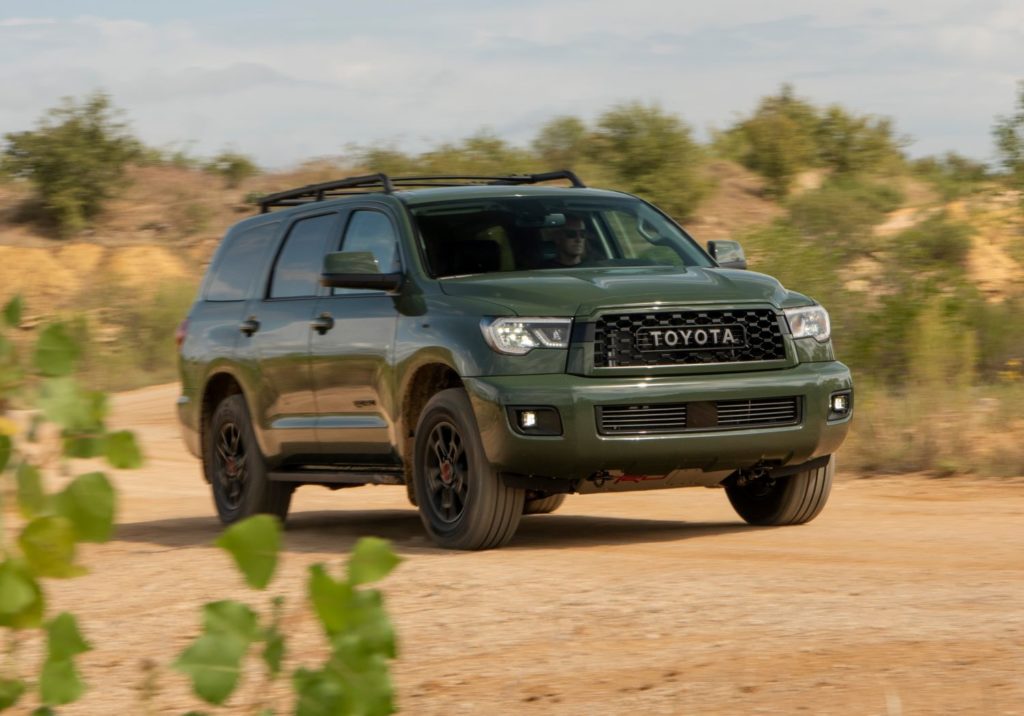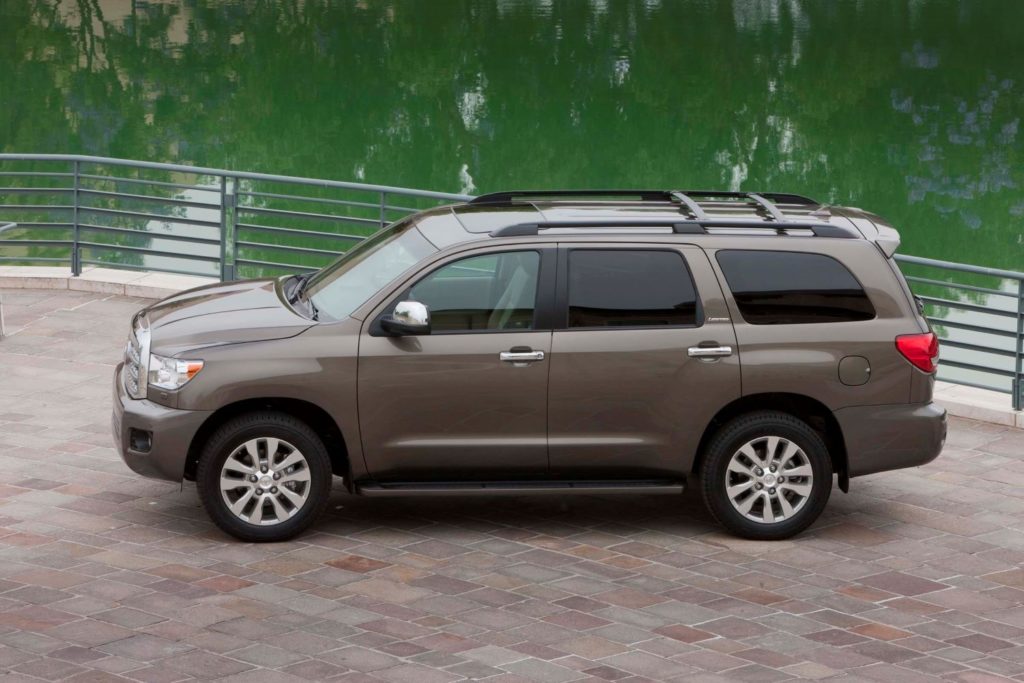The Toyota Sequoia is a full-size SUV that is quite similar to the other full-sized SUV that Toyota makes, the Land Cruiser. The resale value of the Sequoia is good, as Toyotas generally hold their value over time. After five years, a Toyota Sequoia’s value will depreciate about 43%, according to CarEdge.com.
In this article, we’ll talk about the reliability of the Toyota Sequoia and the common problems of its models since its first generation was made in 2001.
Is the Toyota Sequoia Reliable?
The Toyota Sequoia is excellent when it comes to reliability. This is according to RepairPal who gave it an overall reliability score of 4.0 out of 5.0. They also said that, on average, a Toyota Sequoia only visits a repair shop 0.3 times a year. Among all its visits, it only has a 12% probability that the damage is severe.

Unlike the Land Cruiser, the Sequoia is more practical and simple. This is because the Land Cruiser has more premium features like a larger engine, a more luxurious interior, and more off-road features. Both offer plenty of space for people and luggage, but the extra features of the Land Cruiser make it more expensive. This is a plus for the Sequoia because getting replacement parts is going to be less expensive, and fewer electronic features mean fewer components will have the possibility of breaking over time.
Motorbiscuit even called the Toyota Sequoia one of the “most reliable SUVs nobody seems to be driving.” Drivers are saying that the Sequoia can easily last over a decade and get 300,000 miles in the odometer without encountering major issues. The Sequoia and Land Cruiser even got the highest rating from Consumer Reports for reliability.

Toyota Sequoia Problems
While the Sequoia is very reliable overall, it does have some issues that owners may potentially encounter. Here are some of them:

Frame Rust
A common problem with the Toyota Sequoia is its susceptibility to rust. The Sequoia has a truck-like chassis that relies on large metal frames to keep it rigid. However, Toyota may not have properly treated many of the frames in its vehicles on the assembly line with anti-corrosion chemicals. This resulted in many Sequoias being severely rusted after a few years of use. This problem is usually only prevalent in states where salt is often applied on roads. But owners have reported that rust still forms in vehicles that were garaged throughout their lives.
The rust might weaken the load-bearing components of the Sequoia since they are usually the most susceptible. Rustproofing the undercarriage and other vulnerable areas will prevent rust from spreading and preserve the vehicle’s structural integrity.
This problem isn’t just with the Toyota Sequoia but other Toyota SUV models as well. Lawsuits were filed against Toyota in 2016 that led to a $3.4 billion settlement for owners of the 2005 to 2008 Sequoia. The settlement includes the cost of inspections, the application of corrosion-resistant compounds, and in some cases a complete frame replacement.
Failed Oxygen Sensor
The oxygen sensor of the 2001-2004 Toyota Sequoia tends to fail. Owners have reported that the problem has appeared several times over a few years. It can sometimes be unclear whether the diagnostic system or the oxygen sensor is at fault for the check engine light to repeatedly illuminate, but you can identify if it’s a faulty oxygen sensor by looking for engine-related symptoms. A faulty oxygen sensor will cause your engine to have misfires, a rough idle, and poor fuel efficiency.
A replacement oxygen sensor for the Toyota Sequoia costs around $50 to $150.
Camshaft Towers Leak
Camshaft towers are responsible for opening and closing the cylinder valves. Oil regularly passes around the camshaft towers to lubricate them. However, oil leaks occur because the gaskets and o-rings of the Toyota Sequoia tend to fail prematurely. This problem occurs in the 2008 Sequoia. Whenever an oil leak occurs, it puts engine components at risk because there is insufficient oil circulating in the engine. This can accelerate wear and create issues like overheating. Fixing this issue requires replacing all the gaskets and o-rings to seal the leaks.
Lower Ball Joint Issue
There is also an issue with the Toyota Sequoia’s ball joints, which causes them to wear prematurely. This issue happens to the 2001 to 2008 models of the Sequoia. Ball joints don’t have a specific lifespan because some tend to last more than others. Ball joints are regularly checked during inspections because adverse road conditions like potholes and road salt can accelerate wear and tear. If ignored, a worn ball joint can cause the control arm to disconnect from the wheel, causing your vehicle to steer out of control. The ball joint of the 2001 to 2004 Toyota Sequoia models are the ones particularly susceptible to this failure because of an issue during production.
Some drivers have reported that their ball joints failed after hitting a bump. Others have reported that one side of their suspensions just suddenly dropped while driving. One owner reported that the ball joint failure also caused his brakes to fail, causing him to crash into the side of the road. Toyota is aware of the issue and already issued a recall on the lower ball joint.
Cracked Exhaust Manifolds
Owners have also reported ticking noises coming from the engine because of a leaking exhaust manifold. This has been reported to happen in models made from 2001 to 2004. The exhaust manifold is a length of pipe that leads the hot exhaust gasses away from the engine and into the rest of the exhaust system. They typically fail when a crack appears and causes exhaust gasses to leak out of the pipe. Since a lot of engine noise is concentrated in the exhaust, the leak generally causes loud ticking noises. However, as the metal heats up and expands, the pipe could sometimes seal itself and cause the noise to disappear. That’s why this issue typically is the most prominent when the SUV starts up.
While this may seem like an issue that can be ignored because it goes away, it can damage other components if left untreated and cause other issues like poor fuel economy, poor engine performance, and exhaust gasses entering the cabin. Fumes entering your cabin can be dangerous because they can damage your respiratory system and can even be lethal.
However reliable the Sequoia may be, there’s still a chance it may have one of these common issues. Learning about these issues can be helpful if you’re planning on purchasing a Toyota Sequoia so you can look out for them.
Any information provided on this Website is for informational purposes only and is not intended to replace consultation with a professional mechanic. The accuracy and timeliness of the information may change from the time of publication.
















